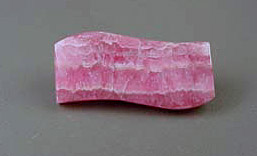
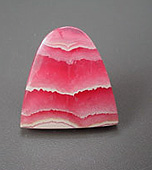
This gem is known to the public primarily from the opaque to translucent aggregate form, generally seen in pleasant looking pink and white patterned cabochons. Good quality stones have high contrast between pink and white sections making the so-called "bacon strip" pattern. Pieces cut from stalactite formations often have concentric rings or "eyes".
One of the "idiochromatic" gems (those which get their color from the constituent atoms of their basic formula rather than from trace impurities), it is colored by manganese. Named from the Greek word, rhodokhros, "of rosy color", rhodocrosite occurs in hydrothermal veins associated with manganese, copper, silver and lead, and sometimes as stalactites in caves. Major sources are Argentina, Mexico, South Africa and the USA.


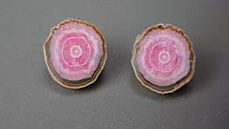
Only gem aficionados realize that this gemstone occasionally occurs in a highly translucent "gel" form, the finest of which have a rich, even, pink color and high translucence. Even more rarely, single crystals form which can be faceted. These pieces, especially the ones from Colorado's "Sweet Home Mine", are hotly sought after and greatly prized by collectors. Their wonderful hot pink, rose and watermelon colors, their excellent brilliance, and their, sometimes, pearly luster make them one of the most beautiful of all the collector gems.
They are so beautiful that some succumb to the temptation to put such pieces in jewelry. This can be done, especially with the tougher aggregate form, but as the gem is sensitive to heat, acid and shock, extreme care in setting and extreme gentleness in wearing are necessary.
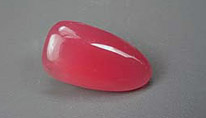
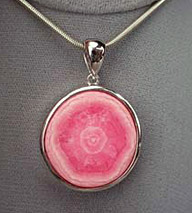
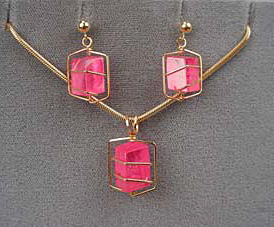
The pink color, lovely patterns and ready availability make this gem a favorite of intarsia artists and carvers.
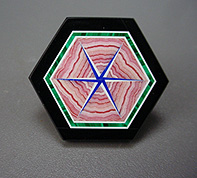
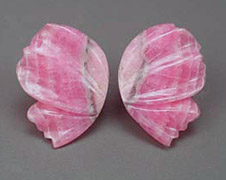
The number of specimens of facet quality are very few to begin with, and, those same crystals are coveted by mineral collectors, further diminishing the supply. This high grade crystalline material is not only extremely rare, but very difficult to facet, due to its softness (3.5 - 4.5) and the perfect cleavages.

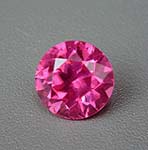
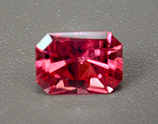
There are no enhancements or synthetics to worry about. The look of cabochon grade material is so distinctive that this is one of the few cases where a "sight identification" might be justified. The gem rhodonite is also rosy pink, but is easily distinguished, in most specimens, by the presence of dark, usually black, rather than light markings. The distinction between these two species is less straight forward with gel and facet grade specimens, though. Faceted rhodonites are usually darker red and are even rarer and more difficult to cut than rhodocrosite, so they are usually more expensive as well.
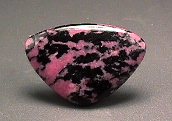
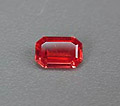
By far, the most valuable specimens are the rosy to watermelon pink faceted stones with saturated color, and eyeclean or better clarity. Fancy cuts add value--> the material is so difficult to cut that most facetors who attempt it stick to the basics using as few facets per stone as possible. There is, as in many gems, an exponential increase in value with size, since crystal sections clean enough to facet are quite rare.
In cabochons, the gel pieces or those with some translucent areas, are valued more highly than fully opaque stones. Those with particularly attractive markings, such as stalactite "bull'seyes" are preferred as well.